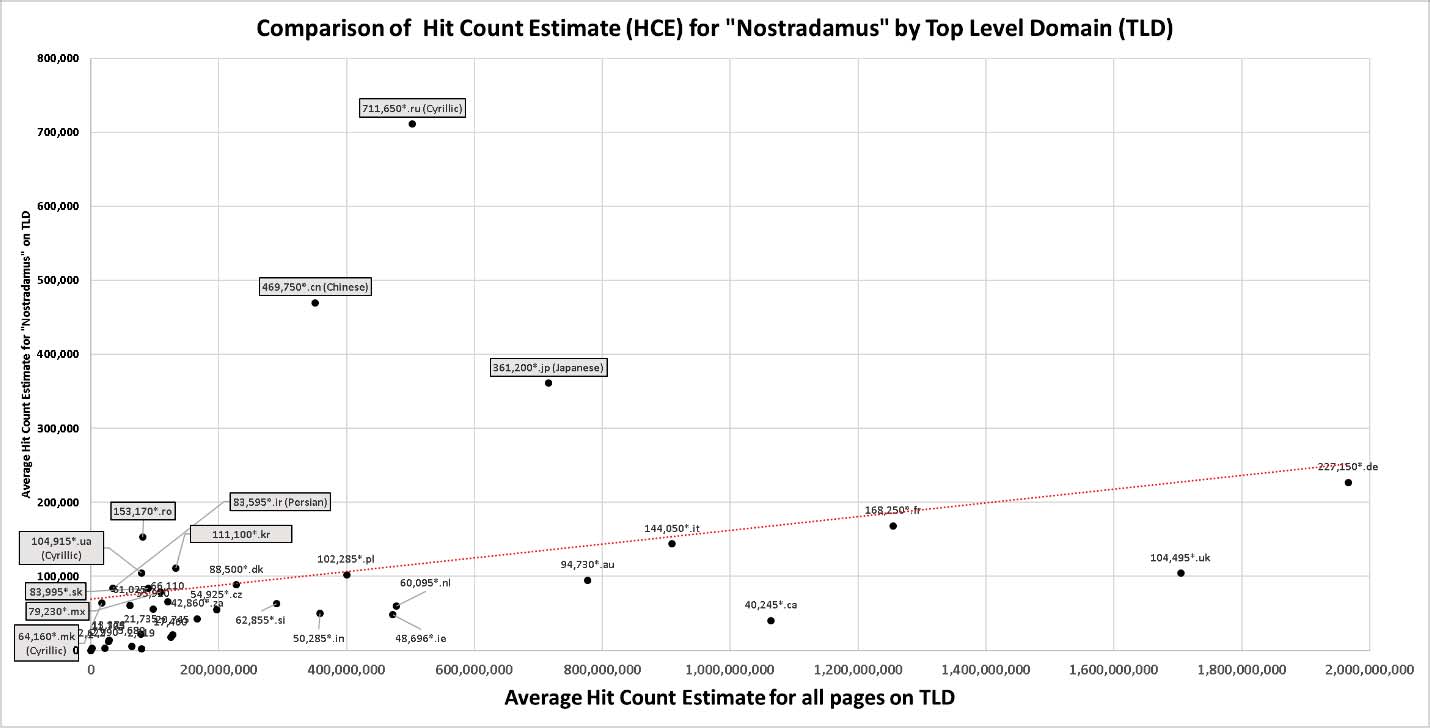I just presented on the attached paper (and a poster of my political model of Russian conspiracism) at the 13th International Conference on Cyber Warfare and Security (ICCWS) which was held at National Defense University in Washington DC. The paper is based on a 2017 analysis of Google ‘hit count estimates’ (HCEs) for 38 news sites and 38 top level domains (TLDs) (two separate investigations) in order to test my theory that Russia employs the concept of Nostradamus and similar ‘prophets’ in a way that is different from the ‘West’. HCEs are a ‘webometric‘ which can potentially be used for conducting quantitative social science research on the internet.
(We are allowed and encouraged by the publisher to post these to personal web pages following the conference. )

My research question was – can I use HCEs as a webometric tool in order to find evidence of a difference between Russian sites and other sites which may corroborate my existing research which uses Google Trends to detect evidence of suspected Russian information warfare campaigns that use Nostradamus (popular eschatology) ‘disinformation’?
“Nostradamus Ratios”: Why is Russia an Outlier?
Abstract: Webometrics is defined as “the study of the quantitative aspects of the construction and use of information resources, structures and technologies on the web drawing on bibliometric and informetric approaches” (Bjorneborn & Ingwerson 2004); and “the study of web-based content with primarily quantitative methods for social science research goals” (Thelwall 2009). Hit Count Estimates (HCEs) are a webometric provided by search engines giving an approximate number of the relevant pages indexed by the search engine. HCEs are not very reliable, but they have been observed to be up to 78% reliable on Google and it is the recommended platform for HCE-based research (Uyar 2009). Webometrics may have promise in the fight against online disinformation and influence campaigns as evidenced by tools like Hamilton 68; or in the application of Google Trends and similar tools to highlight the possible effects of “information attacks” (Hotchkiss 2017). The current investigation seeks to apply HCEs as a webometric which may supplement existing findings in disinformation research. HCEs were collected over a period of 21 days for 38 “Western” and Russian news sites and 38 ‘Top Level Domains’ (TLDs) in order to create averages which would account for observed daily variability in HCEs. HCE results were collected for the total number of pages on the news site or TLD, the number of times the search term “Nostradamus” (or regional translation) appeared on pages on the news site or TLD; and the number of times “Nostradamus” (or regional translation) appeared in the page title on news sites. These data points were used to create various simple ratios and rankings. In addition, the qualitative aspects of the news sites with Nostradamus in page titles were analysed to determine if a site promoted belief in the supernatural powers of Nostradamus. Findings suggest Russia is an outlier among tested news sites and TLDs, and it promotes Nostradamus as a genuine prophet (especially to Spanish-language audiences via RT.com). Ultimately, the sometimes apparently chaotic and non-contextual nature of HCEs means they are probably only good for supplemental findings, at best, and should be accompanied by a qualitative analysis if possible.
(This post may be updated in the near future with a narrated slide deck video on Youtube.)
